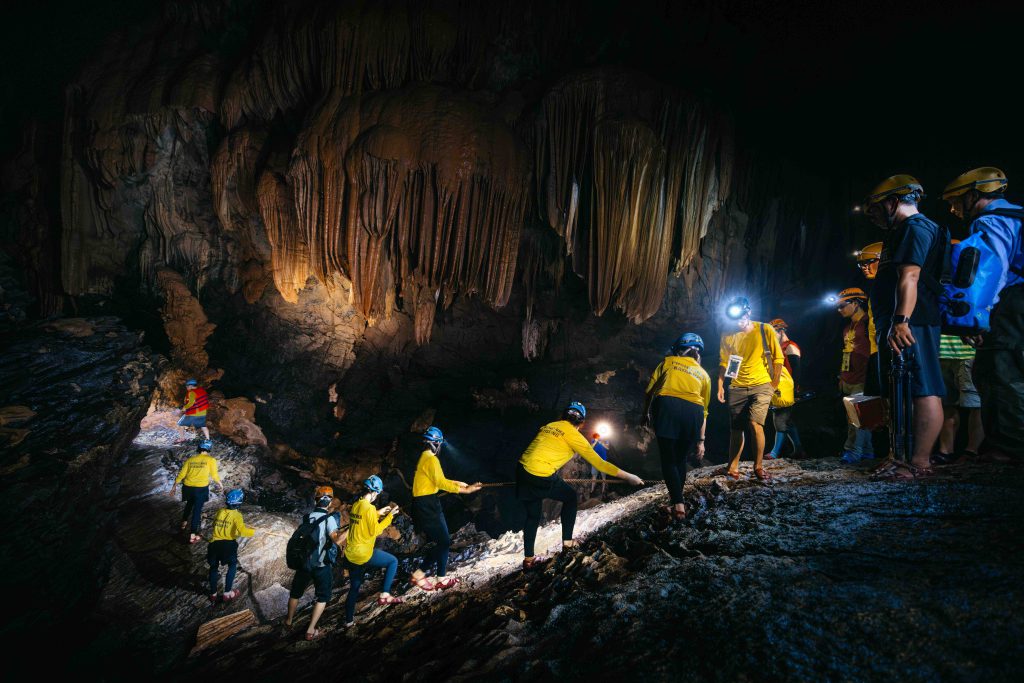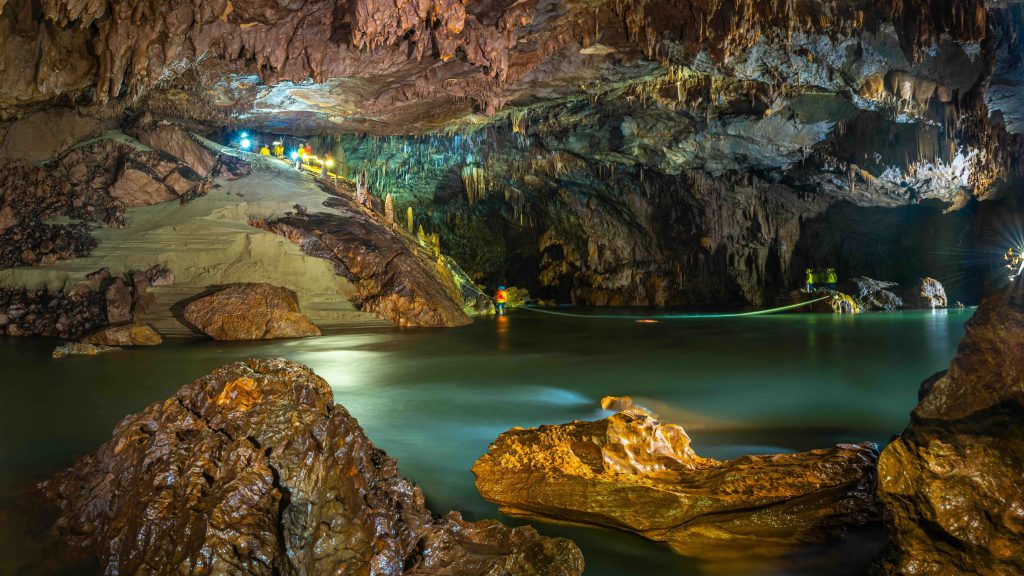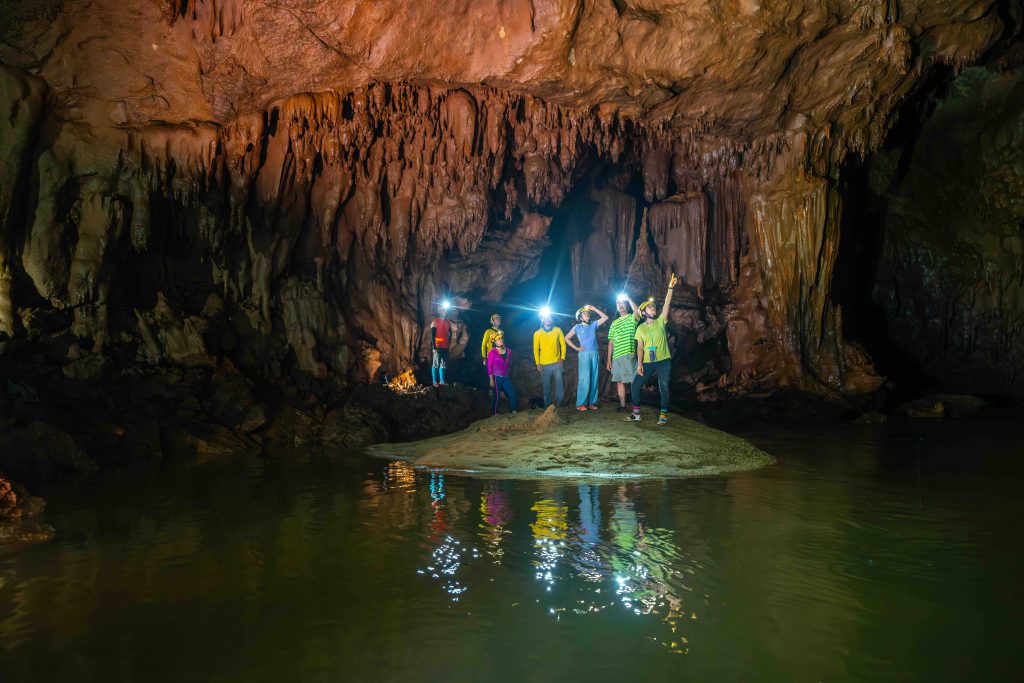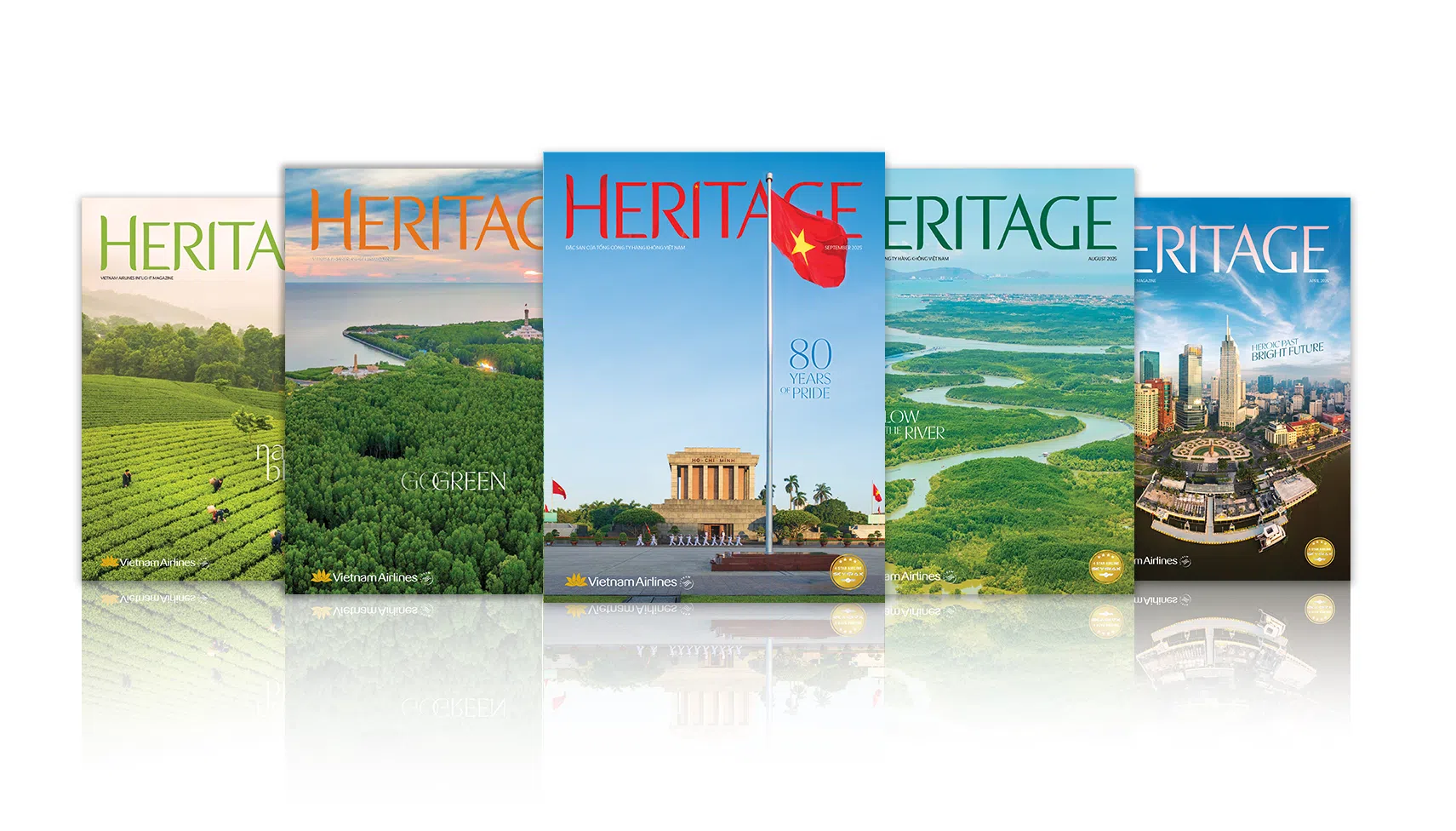Story: Long Ho
Photos: Quang Tri 2025 Photo Tour Team
Recognized by UNESCO as a World Natural Heritage Site in 2003, Phong Nha – Ke Bang National Park is home to over 400 ancient limestone caves, among the most magnificent in Asia. The mysteries hidden within these mountains are irresistible for lovers of adventure travel and include an underground river nearly 14 kilometers long.

There are many ways and routes to explore these caves, depending on one’s interests, stamina, and time. To experience nature in its purest form, I chose the Xuyen Son Lake Tour – a guided 4.5-kilometer underground river journey through Phong Nha Cave.
Gliding upstream on the jade-green Son River, our boat passed peaceful villages with red-tiled roofs, playful children, and fishermen casting their nets in the morning sun. As we neared the cave’s entrance, the landscape grew increasingly majestic. Some travelers switched to kayaks for a more adventurous experience.
“This tour is truly special,” said Nguyen Hai, a photographer from Quang Tri and our team leader. “You’ll kayak, climb, swim, and trek through the mountains – a round trip of about nine kilometers.”
After putting on life vests, helmets, headlamps, and non-slip shoes, we set off. “Keep a steady pace and watch out for your teammates,” Hai called, his voice echoing off the limestone walls. Adrenaline surged as we paddled toward the cave’s entrance, excitement rippling through the group like the water beneath our kayaks.

The entrance to Phong Nha Cave emerged like a colossal trapezoidal gate – the only outlet of the underground river. Cool air swept out, carrying the scent of damp stone and earth. The deeper we ventured, the wider the chamber became. Towering vaults loomed above, adorned with countless stalactites: some shaped like Buddha figures, others like ancient temple spires or coral formations shimmering under our headlamps.
I tilted my head back, awed by limestone columns shaped over millions of years, glimmering like crystal under the lights. It felt as though I had entered a cathedral carved by nature.
Leaving this spellbinding chamber, we paddled deeper into the darkness. The current pressed against our kayaks, making each stroke a challenge. As daylight faded behind us, only our headlamps revealed the walls’ eerie textures. The air smelled faintly of earth and moss, and bats fluttered in the darkness.
Where the river met a rocky barrier, we disembarked and began a 1.5-kilometer trek into the cave’s depths. We scrambled over slick boulders, waded through shallow pools, and edged along narrow ridges in near-darkness, guided only by our headlamps. We had to use ropes to climb steep rock faces and crossed dunes of fine sand studded with towering stalagmites. The terrain was jagged and unforgiving, sharp as coral, demanding full concentration with every step. My hands gripped the ropes until my knuckles turned white, and my legs trembled on the slippery stone. Yet the challenges drew our group closer, each person lending a hand under the steady guidance of the experienced porters.

At last, after the final climb, we reached Xuyen Son Lake – a hidden pool encircled by towering limestone walls. We swam in the icy water, our breaths quick and misty. In that vast silence, broken only by splashes and the echoes of dripping water, I felt an overwhelming sense of freedom. We tied our kayaks to nearby rocks and crossed a sandbank as soft as velvet, where we paused to rest and reflect. When we switched off our lights, total darkness embraced us. Time seemed to stand still, leaving only the rhythm of the water and the whisper of mist, like ancient music echoing in the mountain’s heart.
On the way back, we stopped at Bi Ky Cave for lunch. Spread across a dry sandy beach, our meal was simple yet satisfying: sticky rice, grilled pork, fresh forest vegetables, and local fruits. The atmosphere felt even more sacred when we learned that ancient Cham people had lived here over a thousand years ago, and during wartime, Truong Son soldiers had sought refuge within these same walls. In this quiet space, past and present seemed to merge.
Continuing our journey, we trekked another 300 meters to Tien Cave, a place of otherworldly beauty. Its lofty ceilings, smooth sandy floor, and glittering stalactites have earned it the name “the underground fairyland.” Nearby, Cung Dinh Cave captivated us with formations resembling a royal palace. As sunlight streamed through the entrance, bathing the cave in a golden glow, our fatigue melted away, replaced by pure joy.
As I paddled slowly back toward the starting point, a gentle breeze from the Son River brushed my face. Golden light shimmered across the water’s surface – a perfect finale to seven hours of unforgettable adventure.
Exploring an underground river carved through the heart of the earth was a once-in-a-lifetime experience. This journey taught me endurance, patience, and a deep respect for nature. I realized that responsible travel is not only about discovery, but also about sharing the duty to protect these wonders for generations to come.
Recently, the World Travel Awards (WTA) honored Phong Nha – Ke Bang National Park with two prestigious titles: Vietnam’s Leading Nature Destination 2025 and Asia’s Leading National Park 2025.










